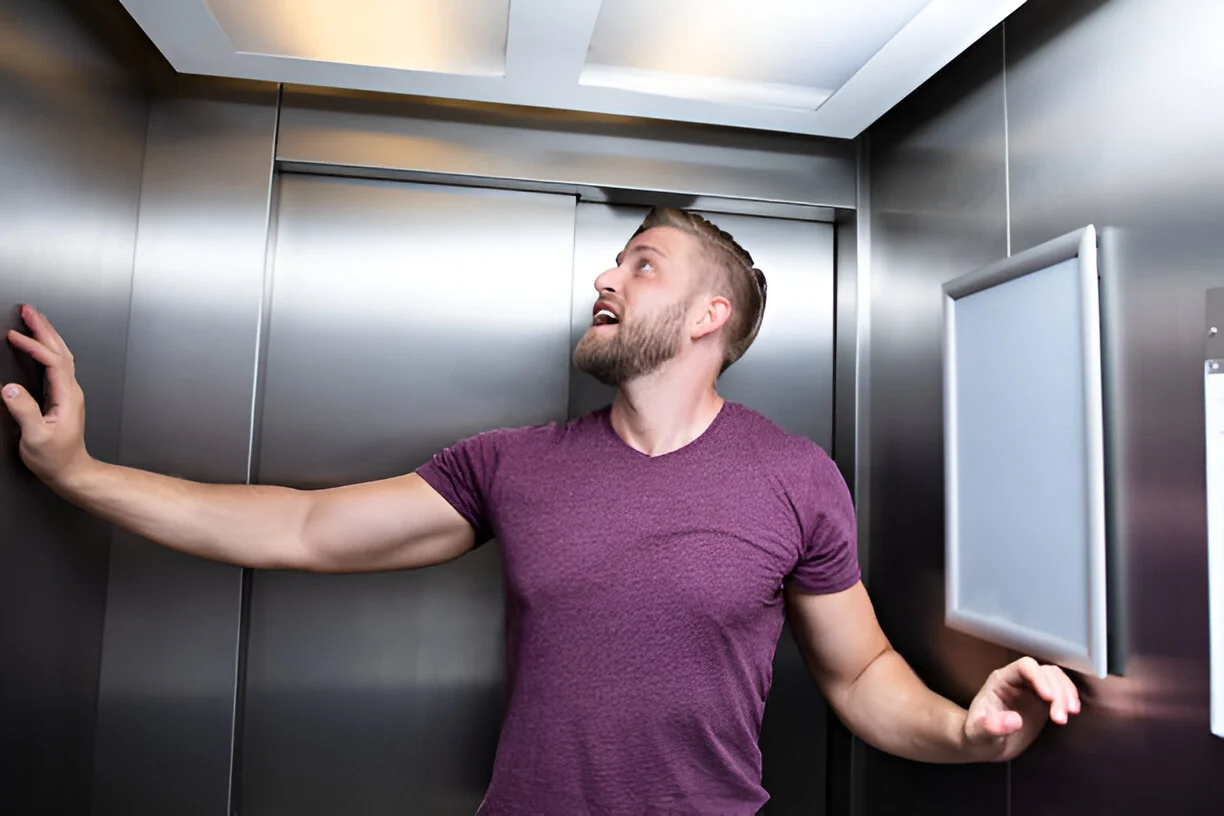Whenever you go into a high-rise building, whether a hotel, office building, hospital, or retail, you will likely take an elevator. It just cannot be avoided. Elevators have become an indispensable part of our daily lives. They deliver us effortlessly between floors, saving time and energy to our destination. But what happens when an elevator fails, leaving us trapped in a metal box suspended between floors? Recent events involving the Los Angeles Chargers quarterback Justin Herbert and his teammates have brought this scenario into sharp focus. This incident prompts us to examine not only the psychological impact of such incidents but also the broader implications for elevator safety and our societal response to these risks.
The Chargers’ Elevator Ordeal: A Case Study
On a Friday night in Dallas, “11 or 12” Chargers players, including star quarterback Justin Herbert, found themselves in a harrowing situation when their hotel elevator became stuck. For two hours, these athletes – accustomed to high-pressure situations on the field – faced a different kind of challenge. They were trapped in a confined space with temperatures rising. This could be a tight spot.

Head coach Jim Harbaugh, who narrowly missed being part of the group, described the scene as the players emerged: “As each person came off the elevator, sweating and some had the shirt off. Justin Herbert, his hair was a little wet. But his shirt was completely dry. That was another thing that blew me away.”
Harbaugh’s perspective on the incident is telling: “You get in those situations, and it’s a test of wills. I was proud of each of the guys and the two women that were on that elevator. That’s a win. You feel good about yourself. You were challenged. It was a test of will, and you pull it down, or pull it in.”
This categorizing this experience as a “win” and a “test of will” provides an intriguing insight into how we, as a society, often normalize and even glorify potentially dangerous situations. Elevators are built with several safety mechanisms so no one gets hurt but this does not mean that people cannot get stuck or that the elevator is receiving proper maintenance.
The Psychology of Elevator Entrapment
Being stuck in an elevator can trigger a range of psychological responses. For many, the experience activates primal fears of confinement, abandonment, claustrophobia, and loss of control. The uncertainty of the situation – not knowing how long the ordeal will last or whether help is on the way – can exacerbate anxiety and panic.
However, humans are remarkably adaptable creatures. In group situations like the Chargers experienced, social dynamics come into play. Leadership emerges, and individuals often band together, providing mutual support and reassurance. This social cohesion can significantly mitigate the psychological impact of the experience. It helps in forgetting the fact that you are trapped in close quarters.
Moreover, our ability to rationalize and contextualize experiences plays a crucial role. As Harbaugh’s comments illustrate, reframing the ordeal as a challenge to be overcome or a story to be shared later can help individuals cope with the immediate stress. It potentially even allows viewing the experience in a positive light afterward. Having faith and knowing you will be released by the team of experts shortly minimizes the anxiety.
The Paradox of Elevator Safety
Statistically, elevators are one of the safest forms of transportation. According to the National Elevator Industry, Inc., U.S. elevators make 18 billion passenger trips per year. Accidents do happen, and it is not known how many or to what extent. You can usually find several incidents on YouTube; however, there is no central database.
Yet, the fear of elevator malfunction persists in the public consciousness. This fear is not entirely irrational. Being trapped in a small space, potentially for hours, is a stressful thought. The incident with the Chargers players, while resolved safely, underscores that even in high-end hotels with presumably well-maintained facilities, such events can occur. The elevator industry does not judge. Everyone is open to elevator issues.
The Normalization of Risk
Perhaps the most concerning aspect of our relationship with elevators is the normalization of risk. Harbaugh’s framing of the incident as a “win” and a test of character, while understandable from a team-building perspective, potentially undermines the seriousness of the situation.
This attitude reflects a broader acceptance of certain risks as part of daily life. We continue to use elevators despite knowing that malfunctions can occur. The convenience they offer outweighs the perceived risk. This cost-benefit analysis is performed subconsciously every time we step into an elevator. The fact that we were trapped in an elevator or experienced an issue like misleveling or loud noises does not deter us from getting on to the next one.
The Need for Enhanced Safety Measures and Public Awareness
While the safety record of elevators is commendable, incidents like the one in Dallas highlight the need for ongoing vigilance and improvement in elevator safety protocols. Key areas for focus include:
1. Regular Maintenance
Ensuring that all elevators undergo frequent, thorough checks to prevent malfunctions is crucial. An elevator should, at a bare minimum, have quarterly maintenance and, in most cases, monthly maintenance by an elevator service provider. Elevator maintenance is the backbone of a well-maintained elevator.
2. Enhanced Emergency Response
ensuring there is a plan if there is an entrapment. The industry standard is 30 minutes. Improving communication within elevators and ensuring rapid response times from emergency services is key before there is an issue.
3. Public Education
Providing clear information on what to do in case of elevator entrapment, including how to use emergency features and how to stay calm. There is a phone or a communication device in place if there is an entrapment or major elevator issue.
4. Psychological Support
Recognizing that being trapped in an elevator can be a traumatic experience and offering appropriate support to those affected is essential. The mere excitement of being free might not be enough for some people.
5. Transparency
Building managers should be more open about safety records and incident reports to build public trust. The public takes for granted that the elevators are an acceptable riding requirement when in essence they have been having issues with the elevators for months. Only the stakeholders of the building really know the situation of the elevators.
Balancing Convenience and Safety
The incident involving Justin Herbert and his teammates serves as a reminder of the unexpected challenges we can face in our modern, technology-dependent world. While it’s admirable that the players handled the situation with resilience, we must be cautious about glorifying such experiences or accepting them as inevitable.
As a society, we cannot forget the convenience that elevators provide and maintaining a healthy respect for the potential risks they pose. This means supporting stringent safety standards, demanding transparency from manufacturers and building managers, and being prepared for emergencies. Unfortunately, the current elevator industry requires the general public to be aware. Elevator consulting firms are in business to protect building owners and their clients.
Ultimately, while we may continue to step into elevators with confidence, we should do so with awareness—not fear, but informed caution. By understanding the psychology behind our acceptance of such risks and pushing for continual improvements in safety measures, we can ensure that our vertical journeys remain as safe as they are convenient.
In the words of Jim Harbaugh, getting stuck in an elevator may be a “test of wills,” but it’s a test we should strive to make increasingly rare. We can achieve this through vigilance, preparation, and unwavering commitment to safety.

